Spanish Ham
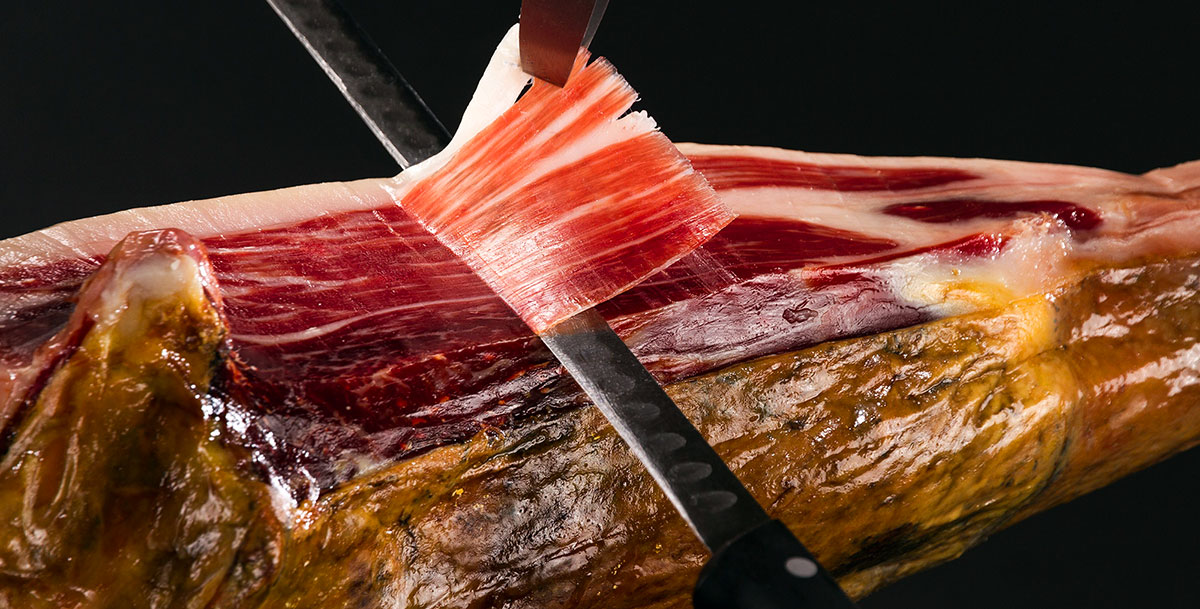
If you are a ham lover, this post will be very useful to learn how to distinguish between different types. Knowing its origin and food, you will surely enjoy its texture and its spectacular flavor much more.
The jamón ibérico is known worldwide and has become an icon of traditional Spanish cuisine. In this article we will talk about Spanish ham so that you will know the varieties and learn about the tastes and its intense flavours, its pleasant texture and its aroma.
The rating of ham in Spain is based on different criteria. Firstly, we can distinguish the ham according to the breed of the animal. Based on that it’s possible to distinguish between jamón ibérico and the jamón blanco. The 100% jamón Ibérico comes from a piglet that was born from 100% Iberian pigs, whereas the jamón blanco comes from a crossbreed. Therefore it’s useful to know the percentage of Iberian it contains.
Another criteria is the pigs’ food intake. This is how acorn-fed ham (jamón de bellota) is determined. Jamón de bellota comes from an Iberian free range pig raised on grassland and which, in its last months of fattening, has been fed natural grasses and acorns. The jamón de cebo de campo, comes from an Iberian free range pig that has fed on natural pastures and feed. And the jamón de cebo is the result of an Iberian pig that has been raised on farms and whose food intake was based on cereal and vegetables.

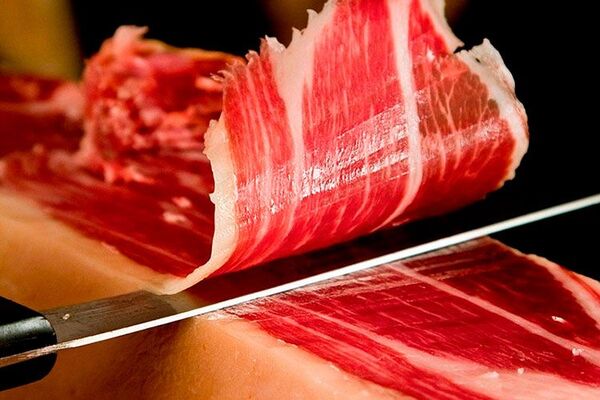
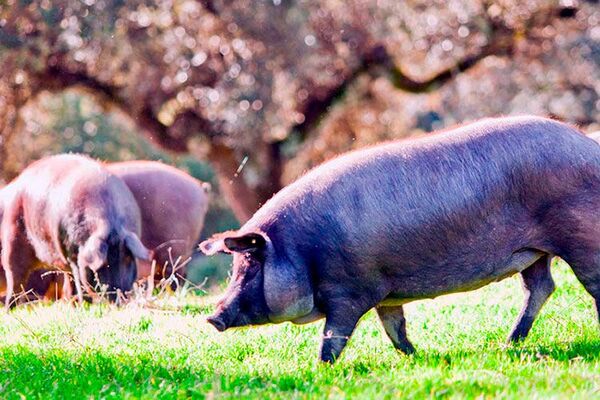
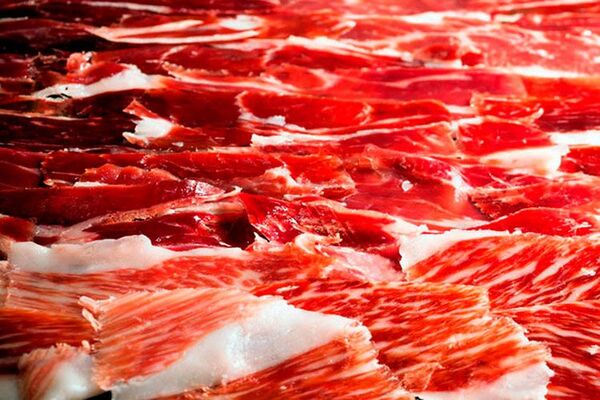
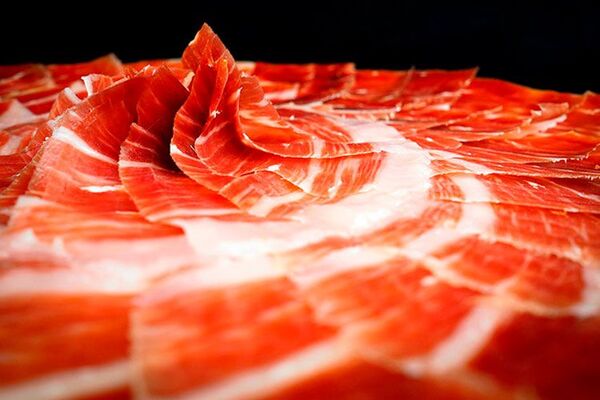





You can distinguish different types of ham thanks to their labels. A black label stands for 100% Iberian acorn ham, a red label means regular Iberian acorn ham. A green label is jamón de cebo de campo ibérico and the white label stands for jamón de cebo ibérico. The pieces identified with colours red, green, white, have to be accompanied by a % to determine the quantity of the Iberian breed that the product contains. Concerning the taste, the jamón de bellota is softer and tastier, since the fat is almost entirely acorns, it will have similar characteristics to olive oil.
But if you want to become a true ham expert, you can follow these guidelines to recognize an Iberian ham from a white labeled one with just a look. Firstly, the “caña” (the narrowest part of the ham that joins the meat with the hoof) is smaller for Iberian ham. The legs of Iberian hams are more slender and longer than white-labelled hams. The Iberian hams have a V-shaped cut just where the “caña” ends, and the hooves are black, although this might not always be the case. And to see if the pig has fed on acorn or natural pastures, you can take a loot at the fat. If it shines and you can stick your finger in easily, the Iberian ham will be acorn-fed.
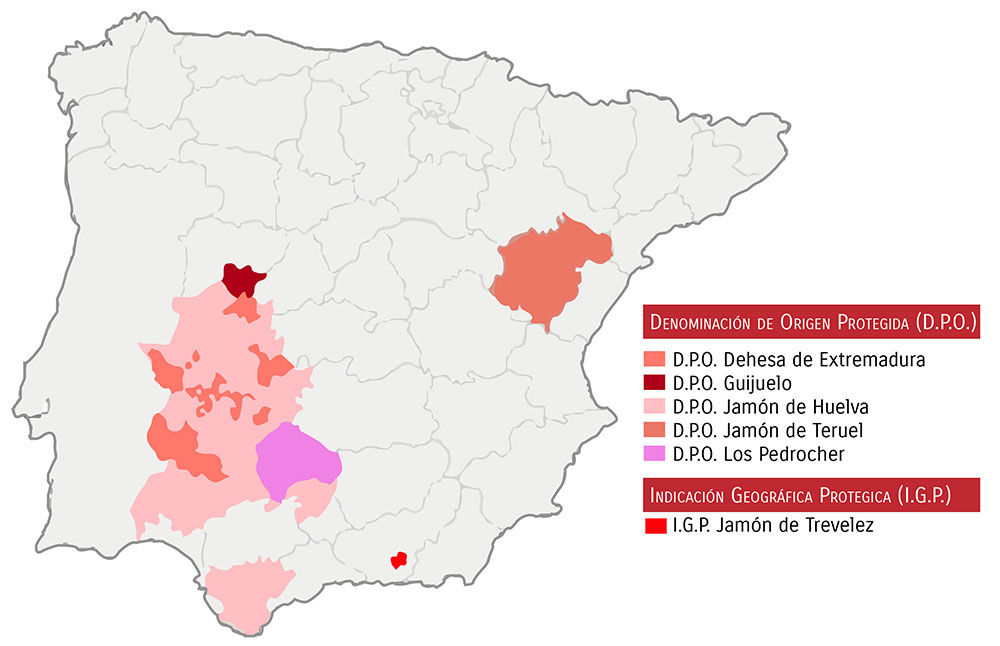
The Iberian ham has different names of origin: la Dehesa de Extremadura, Guijuelo, Jamón de Jabugo and Los Pedroches, that belong to the Andalucian, Extremadura and Castilla and León regions. While the white-labelled ham can be recognized under the following names: Jamón de Teruel, Jamón Trévelez and the Jamón Serón.
It is vital for a ham to be cut by an experienced person. The excellent quality of the product is not only a result of its careful and strict preparation. Its quality is the result of an elaborate process that begins in the pastures where the pigs are raised and continues when the ham is cut, ready to be served. To fully take advantage of its flavour, it must be cut into (not too) long thin slices. Just enough to appreciate its colour, taste its texture and flavour. Which is why so many people appreciate the art of cutting good ham.
The rating of ham in Spain is based on different criteria. Firstly, we can distinguish the ham according to the breed of the animal. Based on that it’s possible to distinguish between jamón ibérico and the jamón blanco. The 100% jamón Ibérico comes from a piglet that was born from 100% Iberian pigs, whereas the jamón blanco comes from a crossbreed. Therefore it’s useful to know the percentage of Iberian it contains.
Another criteria is the pigs’ food intake. This is how acorn-fed ham (jamón de bellota) is determined. Jamón de bellota comes from an Iberian free range pig raised on grassland and which, in its last months of fattening, has been fed natural grasses and acorns. The jamón de cebo de campo, comes from an Iberian free range pig that has fed on natural pastures and feed. And the jamón de cebo is the result of an Iberian pig that has been raised on farms and whose food intake was based on cereal and vegetables.










You can distinguish different types of ham thanks to their labels. A black label stands for 100% Iberian acorn ham, a red label means regular Iberian acorn ham. A green label is jamón de cebo de campo ibérico and the white label stands for jamón de cebo ibérico. The pieces identified with colours red, green, white, have to be accompanied by a % to determine the quantity of the Iberian breed that the product contains. Concerning the taste, the jamón de bellota is softer and tastier, since the fat is almost entirely acorns, it will have similar characteristics to olive oil.
But if you want to become a true ham expert, you can follow these guidelines to recognize an Iberian ham from a white labeled one with just a look. Firstly, the “caña” (the narrowest part of the ham that joins the meat with the hoof) is smaller for Iberian ham. The legs of Iberian hams are more slender and longer than white-labelled hams. The Iberian hams have a V-shaped cut just where the “caña” ends, and the hooves are black, although this might not always be the case. And to see if the pig has fed on acorn or natural pastures, you can take a loot at the fat. If it shines and you can stick your finger in easily, the Iberian ham will be acorn-fed.

The Iberian ham has different names of origin: la Dehesa de Extremadura, Guijuelo, Jamón de Jabugo and Los Pedroches, that belong to the Andalucian, Extremadura and Castilla and León regions. While the white-labelled ham can be recognized under the following names: Jamón de Teruel, Jamón Trévelez and the Jamón Serón.
It is vital for a ham to be cut by an experienced person. The excellent quality of the product is not only a result of its careful and strict preparation. Its quality is the result of an elaborate process that begins in the pastures where the pigs are raised and continues when the ham is cut, ready to be served. To fully take advantage of its flavour, it must be cut into (not too) long thin slices. Just enough to appreciate its colour, taste its texture and flavour. Which is why so many people appreciate the art of cutting good ham.







